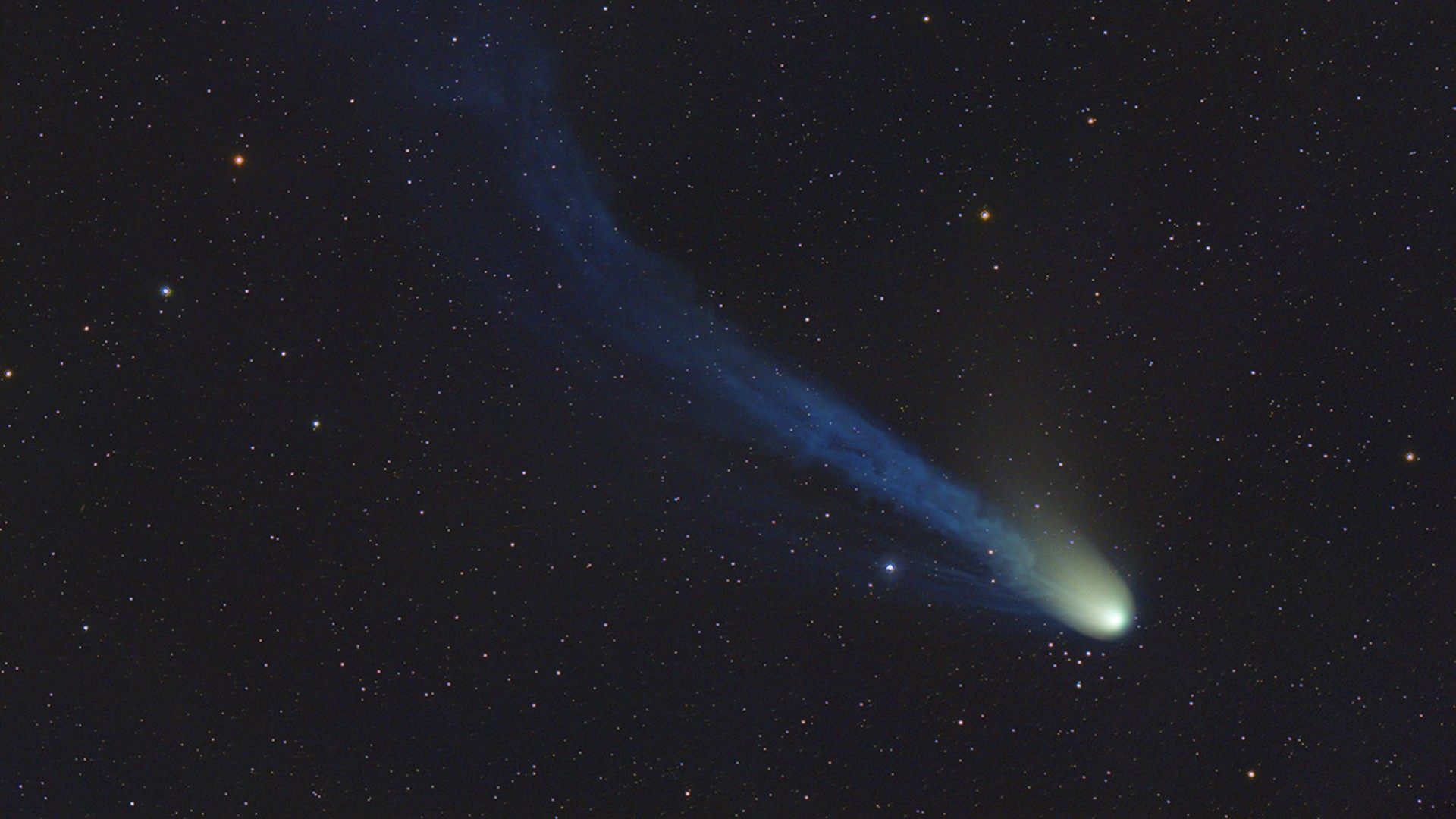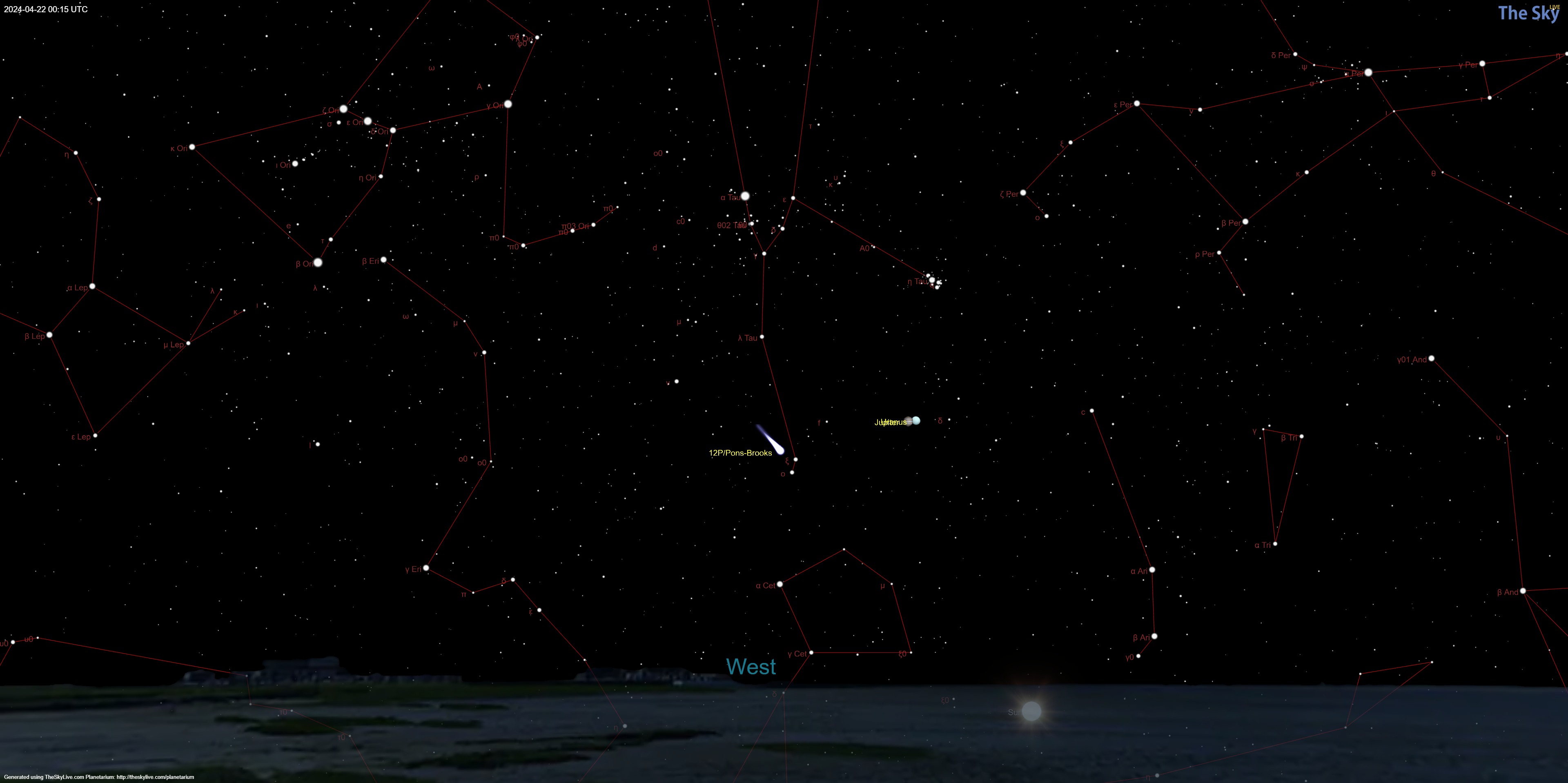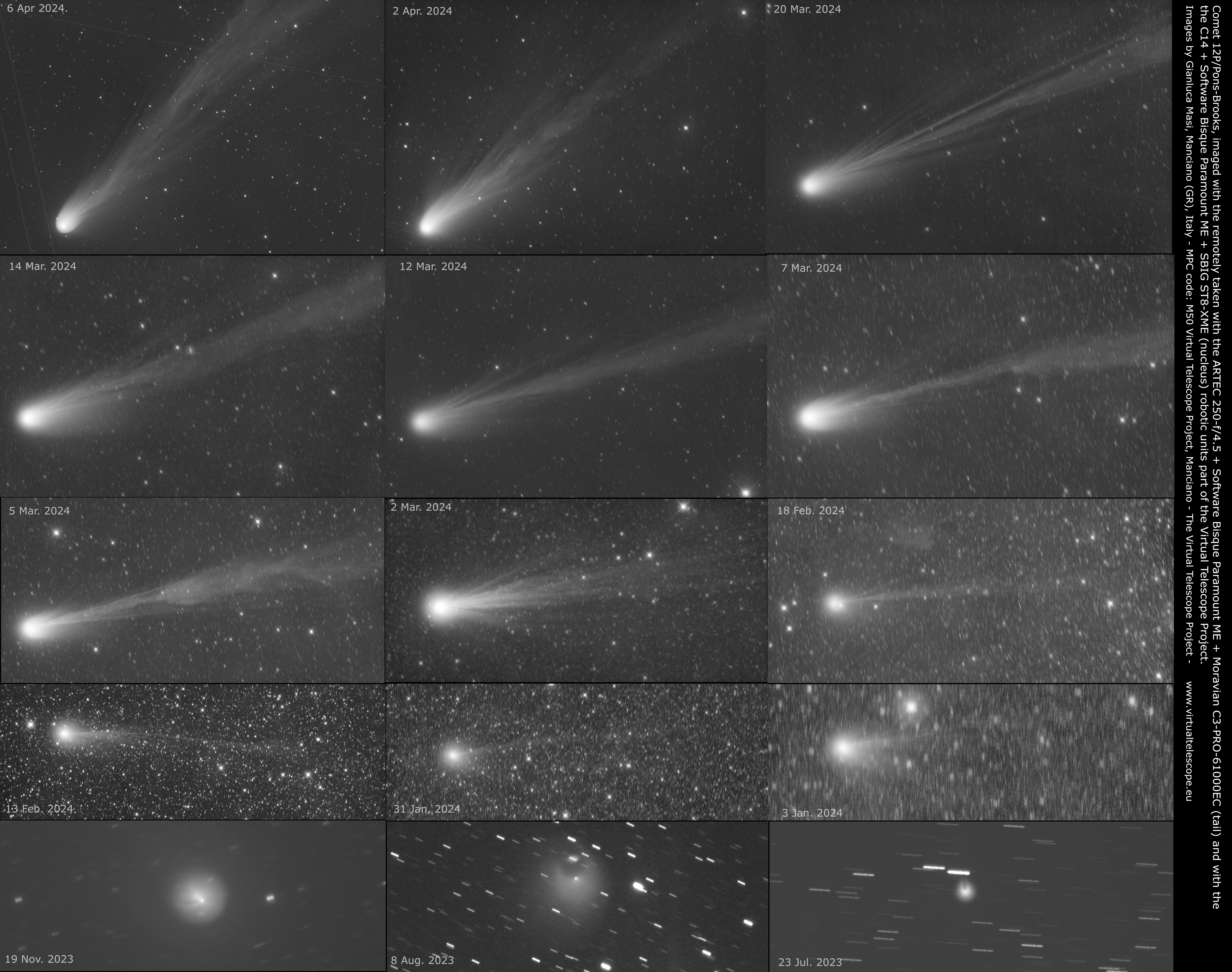
The "Devil Comet" will reach peak brightness this weekend as it passes near the sun.
The comet, also known as 12P/Pons-Brooks, visits the inner solar system every 71 years and will reach perihelion — the point in its elliptical orbit when it's closest to the sun — on Sunday (April 21), appearing bright enough to possibly be seen by the naked eye.
This rarely-seen comet has exhibited occasional outbursts during its journey, creating a horned-like appearance that has earned the comet various nicknames including "Devil Comet" and "Millennium Falcon." These outbursts are fueled by dust, rock and ices that are heated by the sun and turned into gas, which has formed the glowing horned-shaped halo around the comet, also known as a coma.
Related: Here's how to see 'horned' comet 12P/Pons-Brooks at its brightest this week (video)

Want to look at comets like 12P/Pons-Brooks in the night sky? We recommend the Celestron Astro Fi 102 as the top pick in our best beginner's telescope guide.
The 10.5-mile-wide (17 kilometers) comet is on a trajectory that will bring it about 72.6 million miles (116.8 million km) from the sun during its closest approach. This means Comet 12P will be most visible from Earth a few nights before and after reaching perihelion, when it's at its brightest and viewers might have the chance to see it without any equipment. Here's how:
Viewers in the mid- to southern latitudes of North America can look toward the Taurus constellation immediately after sunset to spot the comet. It will be just below the constellation, with the prominent 'V' shape of Taurus pointing down towards it. The comet will appear just to the left of Jupiter, which will appear as a bright pale yellow orb.
Look for a circular, wispy patch of light with possibly a faint tail that stretches up and to the left of the bright central area, or coma, that surrounds the comet's nucleus.

There is a chance that it might be visible to the unaided eye in dark areas with clear skies, but a small telescope or binoculars will certainly allow you to spot Comet 12P if conditions are right in your area.
Unfortunately, observers in northern latitudes may struggle to see the comet because it will be positioned in the glow of sunset.

If the comet has one of its outbursts during its close approach of the sun, it would experience a period of brightening that could make it easier to observe without a telescope or binoculars.
Shortly after this weekend's perihelion, Comet 12P will make its closest approach to Earth on June 2, but by that time, it will only be visible in the Southern Hemisphere.
Editor's Note: If you snap an amazing Comet 12P photo and would like to share it with Space.com's readers, send your photo(s), comments, and your name and location to spacephotos@space.com.







